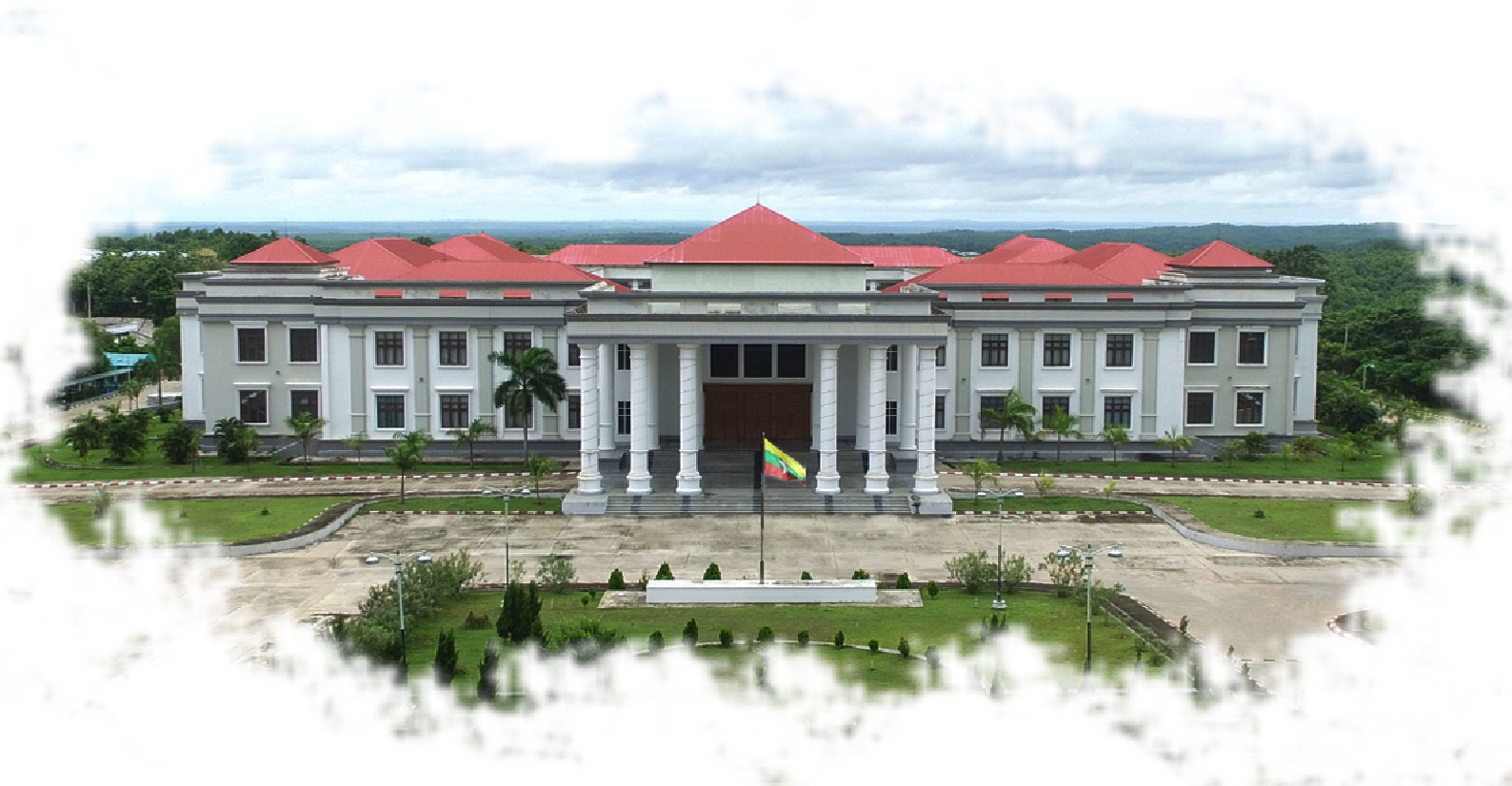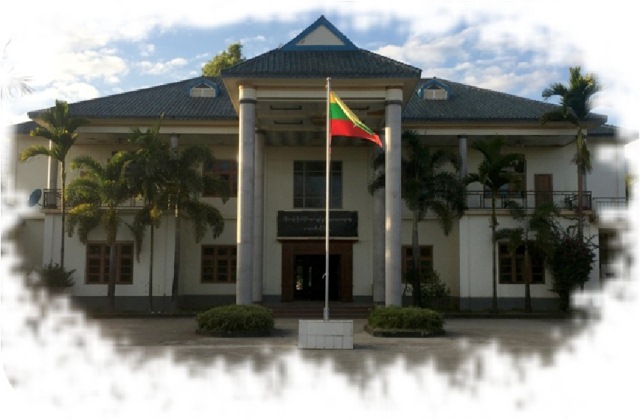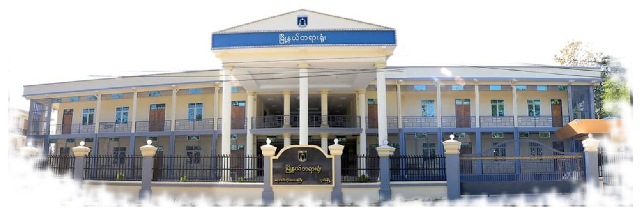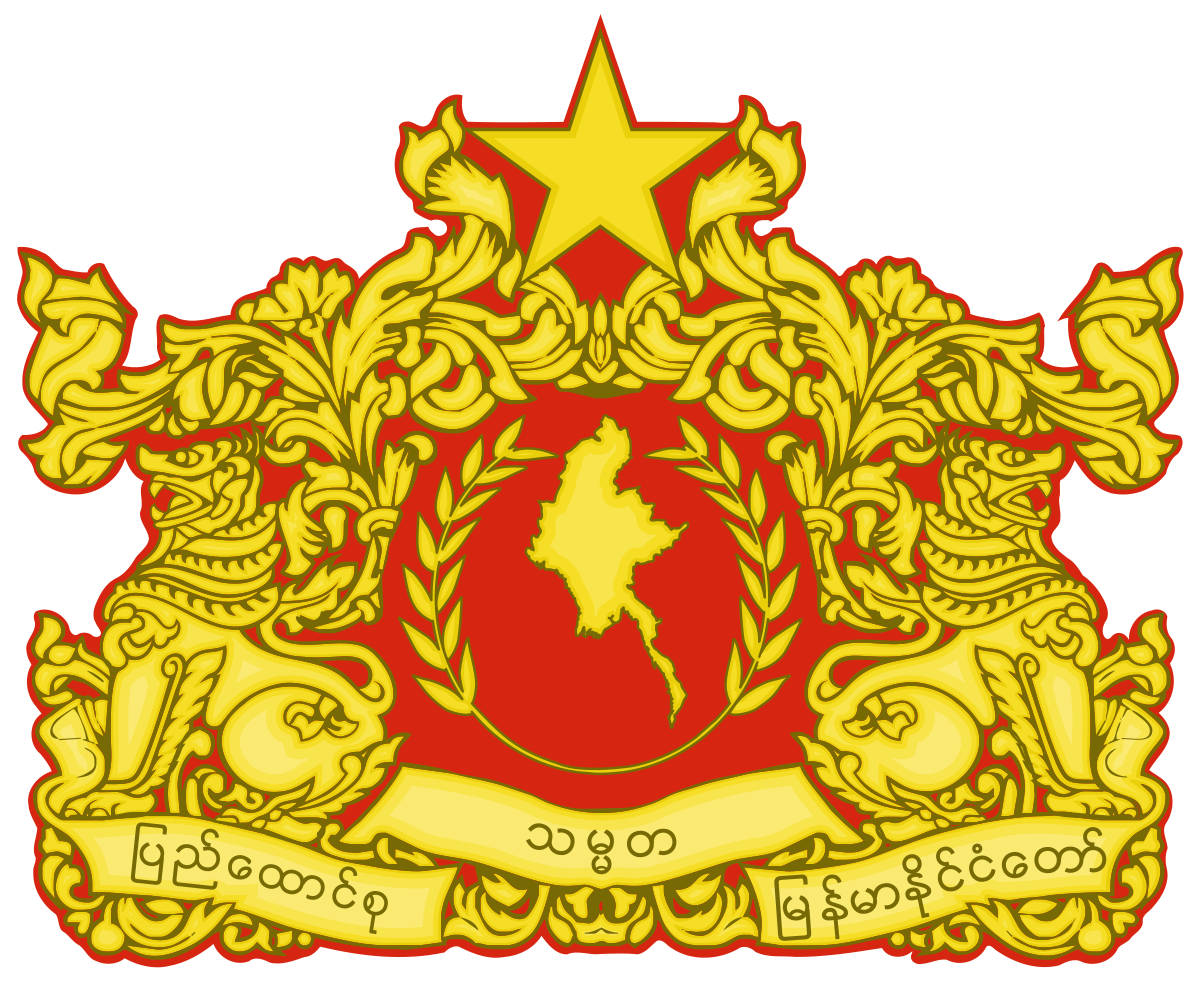The Supreme Court of the Union
The Supreme Court of the Union
Origin
Myanmar under the Myanmar Kings had a solid foundation of legal framework and judicial administration. Myanmar Law was then composed of three elements: Yazathat, Dhammathat and Phyathton. Yazathats; which were the King’s Royal Edicts and Ordinances. These are composed of King’s commands and Criminal Laws for prevalence of law and order, security and peace, including mainly for high treason, murder, dacoity, robbery ,theft etc.
Dhammathat: were collections of Corpus Jurist of Myanmar customary traditions, conventions and ratio decidendi of eminent judges and learned personnel in their decisions or writings, collected and consolidated versions of Myanmar Customary Law throughout the ages. Indeed, Dhammathats are composed of Legal Rules and Principles for Civil matters and Civil Law; they relate mainly to marriage, divorce, partition, succession, inheritance, adoption etc. Those Legal Rules and Principles are based on egalitarian rights relating to equality under law; and are still being applied by the present day courts of the Union of Myanmar. Pyatton: were the Judicial decisions passed by Courts, Benches and the King’s Hluttaw; like the present day Law Reports (Rulings) of the Supreme Court.
In those days, criminal and civil jurisdictions were distinct. Prevention and punishment of acts causing gross disturbances of the peace, to the detriment of public security were considered part of the administrative functions of Government. Hence, criminal justice was dispensed by administrative officials of the State. Civil justice, on the other hand, was administered by judges appointed by or under the King and by arbitrators chosen by parties. Naturally appeals lay in the last resort to the King, but from the decision of an arbitrator there was no appeal.
Development
After becoming an independent State, the Supreme Court and High Court were established and courts at different levels were also formed under the Union Judiciary Act, 1948.
On 2nd March 1962, the Revolutionary Council took over the sovereign powers and the judicial system was transformed into the socialist system. The Revolutionary Council abolished the Supreme Court and the High Court and established the Chief Court instead.
Under the 1974 Constitution, the Central court, the State and Divisional courts, the Township courts and the Wards and Village Tracts courts were formed. The salient feature of the then judicial system was the participation of the working people in all levels of courts.
On 26th September 1988, the State Law and Order Restoration Council promulgated the Judiciary Law and formed the courts at different levels and for the administration of justice in the Union of Myanmar. It was subsequently repealed by Judiciary Law, 2000 which was promulgated on the 27th June, 2000 by the State Peace and Development Council, for the promotion of the judiciary, and to revamp the formation of courts.
The present judicial system was adopted under the 2008 Constitution and Union Judiciary Law 2010.
Constitution
The Supreme Court of the Union is the highest organ of the State Judiciary of the Republic of the Union of Myanmar. It is the apex of the court system in Myanmar and exists as an independent entity alongside the legislative and executive branches.’
From a minimum of 7 to a maximum of 11 judges, including the Chief Justice may be appointed in the Supreme Court of the Union.
Jurisdiction
Only the Supreme Court of the Union has original jurisdiction in the following matters:
(a) matters arising out of bilateral treaties concluded by the Union;
(b) other disputes between the Union Government and the Region or State Government except the Constitutional problems;
(c) other disputes among the Regions, among the States, between the Region and the State and between the Union Territory and the Region or the State except Constitutional problems;
(d) piracy, offences committed at international water or airspace, offences committed at ground or international water or airspace by violating the international law;
(e) cases prescribed under any law.
Subject to any provision of the Constitution or any other law, the Supreme Court of the Union, has the jurisdiction on:
(a) the appeal against the judgment, decree or order passed by the Supreme Court of the Union by exercising its original jurisdiction;
(b) the appeal against the judgment, decree or order passed by the High Court of the Region or the State;
(c) the appeal against the judgment, decree or order passed by any other court in accord with law.
Powers of the Supreme Court of the Union
The Supreme Court of the Union is the superior court of record and has supervisory powers over all courts in the Union and its decisions are binding upon all courts.
A case finally and conclusively adjudicated by the Supreme Court of the Union exercising its original jurisdiction, or a case finally and conclusively adjudicated by the Supreme Court of the Union on the final and conclusive decision of any court may, on being admitted for special appeal by the Special Bench in accordance with the procedures, be heard and adjudicated again by the Special Appellate Bench.
The Supreme Court of the Union has the power to issue the following writs:
(a) Writ of Habeas Corpus;
(b) Writ of Mandamus;
(c) Writ of Prohibition;
(d) Writ of Quo Warranto;
(e) Writ of Certiorari.
Formation of Courts at Different Levels
Under the 2008 Constitution of the Republic of the Union of Myanmar, the following courts were established in the Republic of the Union of Myanmar.
- The Supreme Court of the Union:
- High Courts of the Region/ High Courts of the State;
- Courts of the Self-Administered Division;
- Courts of the Self-Administered Zone;
- District Courts;
- Township Courts;
- The Other Courts constituted by law.
Supreme Court of the Union

- Highest Court of the Union
- Located in Nay Pyi Taw
High Courts of the Region and the State

- Second Highest Level of Court
- 14 High Courts of the Region and the State
District Courts/Courts of Self-administered Region and Zone

- Second Level of Court
- 72 District Courts and Courts of Self-administered Zone
Township Courts/Other Courts constituted by Law

- Court of First Instance
- 330 Township Courts, 22 Other Courts
Website လိပ်စာ



